Michaela Giles explains the ins and outs of Erysipelas, the serious threat it poses and how best to deal with it

In 2016, the government’s disease surveillance group observed an increase in the disease diagnosis rate for Erysipelas; this was reported by the Animal and Plant Health Agency (APHA) in its quarterly UK surveillance data.
Anecdotally, those of us who exhibit our pigs also seemed to have ‘heard’ of a case across the UK last year. The reason for the upward trend hasn’t been fully explained, but a few ideas have been postulated and published (APHA 2016).
Erysipelas can be a serious disease for a pig and, although there’s a common misconception that it’s ‘easily treated’ with penicillin, there can be very significant, knock-on effects.
Widely-found
Erysipelas in pigs is caused by a bacterium, Erysipelothrix rhusiopathiae. It can be detected at most if not all pig farms, with up to 50% of the herd carrying it, asymptomatically, in their tonsils. It’s often present in the pigs’ environment, as the bacteria is shed in saliva, urine and faeces, and can survive outside the pig for up to six months (especially in light-soil environments).
It’s nigh on impossible to eliminate Erysipelas from a herd, especially if it is a breeder-finisher unit, only from individuals within a herd. While E. rhusiopathiae alone can cause clinical disease, an outbreak within a herd may be triggered by a concurrent virus infection, such as Porcine Reproduction and Respiratory Syndrome virus (PRRSv), or influenza.
Clinical signs
Pigs are particularly sensitive to Erysipelas and, as the bacteria multiplies in the body, it invades the bloodstream, causing septicaemia. The rapidity of multiplication of the bacteria, and the level of immunity in the pig, are what then determine the clinical signs seen, of which there are four typical forms:
• Per-acute
Denne historien er fra Autumn 2017-utgaven av Practical Pigs.
Start din 7-dagers gratis prøveperiode på Magzter GOLD for å få tilgang til tusenvis av utvalgte premiumhistorier og 9000+ magasiner og aviser.
Allerede abonnent ? Logg på
Denne historien er fra Autumn 2017-utgaven av Practical Pigs.
Start din 7-dagers gratis prøveperiode på Magzter GOLD for å få tilgang til tusenvis av utvalgte premiumhistorier og 9000+ magasiner og aviser.
Allerede abonnent? Logg på

Woodland Wonders
Chris Graham meets Vicky Quick, and her second batch of much-loved and greatly-appreciated, native breed pigs
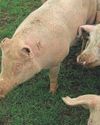
Dangerous Diamonds!
Michaela Giles explains the ins and outs of Erysipelas, the serious threat it poses and how best to deal with it
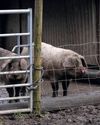
Vital Awareness
Michaela Giles spotlights the latest campaigns aimed at raising awareness among keepers about the threats posed to their pigs by two serious diseases
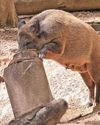
Cause For Concern
Michaela Giles explains the dangers posed to our pig population by the threat of African Swine Fever, as this worrying disease creeps ever closer to the UK
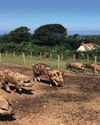
Sailing To Success!
Former yacht captain Mark Terry, and his partner April, an ex-corporate lawyer, have settled on the stunning island of Guernsey and established a successful charcuterie business. This is their story
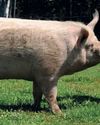
Buying guide: Middle White
Chris Graham introduces another of our native breeds that’s in desperate need of support, yet which should be nothing but a pleasure to own

Easy Fella!
Boars can be a touch pushy come the spring or, on very rare occasions, naturally aggressive. Michaela Giles provides some practical guidance on how best to deal with muscly males
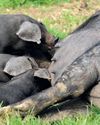
What, No Piglets?
Michaela Giles investigates the huge topic of infertility in pigs, and provides a practical overview of the problem and its many and varied causes
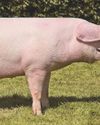
Buying Guide: Welsh
Chris Graham introduces a breed of pig which he argues can offer keepers at all levels just about all they could ever wish for
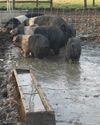
Be Ready!
Experienced keeper Michaela Giles advises that it’s never too early to start thinking about winter, and how best to shepherd your pigs safely through it